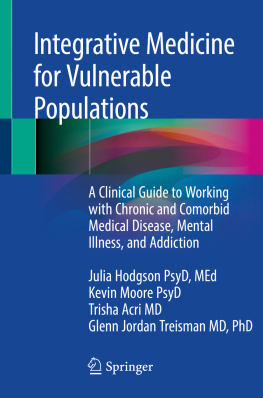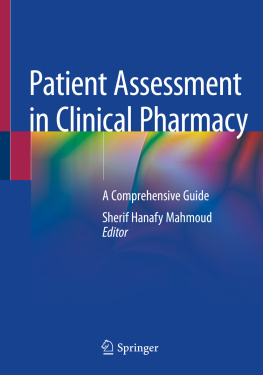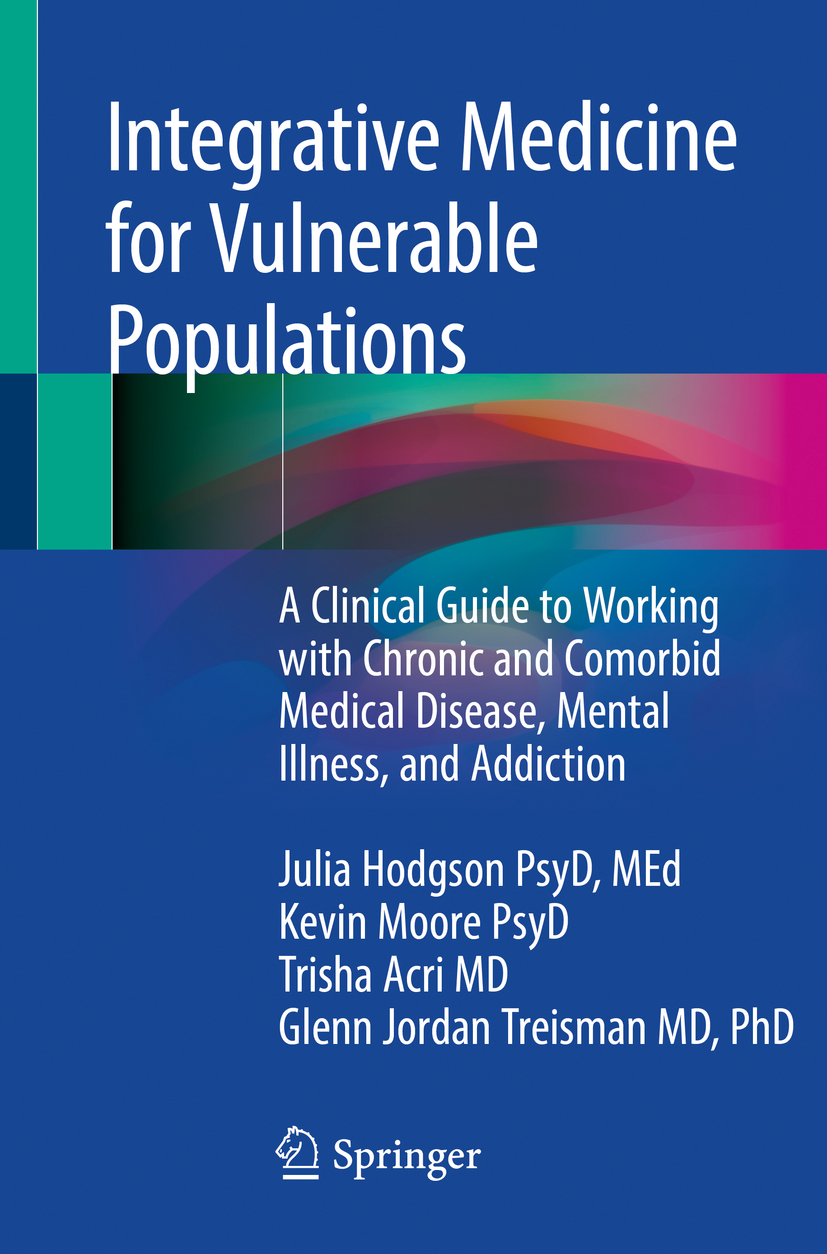Kevin Moore
Sharon Hill, PA, USA
Trisha Acri
Philadelphia, PA, USA
Julia Hodgson
Philadelphia, PA, USA
Glenn Jordan Treisman
Baltimore, MD, USA
ISBN 978-3-030-21610-8 e-ISBN 978-3-030-21611-5
https://doi.org/10.1007/978-3-030-21611-5
Springer Nature Switzerland AG 2020
This work is subject to copyright. All rights are reserved by the Publisher, whether the whole or part of the material is concerned, specifically the rights of translation, reprinting, reuse of illustrations, recitation, broadcasting, reproduction on microfilms or in any other physical way, and transmission or information storage and retrieval, electronic adaptation, computer software, or by similar or dissimilar methodology now known or hereafter developed.
The use of general descriptive names, registered names, trademarks, service marks, etc. in this publication does not imply, even in the absence of a specific statement, that such names are exempt from the relevant protective laws and regulations and therefore free for general use.
The publisher, the authors, and the editors are safe to assume that the advice and information in this book are believed to be true and accurate at the date of publication. Neither the publisher nor the authors or the editors give a warranty, express or implied, with respect to the material contained herein or for any errors or omissions that may have been made. The publisher remains neutral with regard to jurisdictional claims in published maps and institutional affiliations.
This Springer imprint is published by the registered company Springer Nature Switzerland AG
The registered company address is: Gewerbestrasse 11, 6330 Cham, Switzerland
Preface
This book addresses the failures of the healthcare system to address vulnerable patients with multiple, chronic, comorbid conditions. These patients are frequently unresponsive to the methods and approaches used to treat other patients with conditions that are less complicated. This book is intended to be a guide for all allied healthcare professionals to working with these vulnerable patients. Because of the financial and delivery model of healthcare in the United States, which emphasizes specific services provided with maximum efficiency in specialized settings, the larger goals for care for this population of patients are frequently lost. We will emphasize a holistic evaluation which looks at the whole patient, will discuss comprehensive formulations that describe the interacting problems that afflict the patient including elements that are barriers to effective treatment of active medical problems and barriers to recovery, and will describe integrated treatment plans that focus on all the treatment needs of the patient. This may simply sound like good care, but with the current emphasis on problem-focused visits, short medical visits, limited access to psychotherapeutic interventions, and evolution of elements of care located at different sites, healthcare is often fragmented.
Some primary care settings and some community mental health centers have developed models to try to address this problem. Large physician groups often have clinicians within their practice who are the group expert on a particular problem, or primary care is brought into traditional systems focused exclusively on mental health and/or substance abuse treatment. However, for the patients we are discussing, these attempts remain inadequate as evidenced by the large population of chronically ill and inadequately responding patients who are described throughout the medical literature. They are often referred to as high-cost utilizers, inadequate responders, and treatment refractory in publications and administrative settings. The implication is often that the patients are uncooperative or that their conditions are beyond the reach of the medical system. Because integrative medical practice is successful with these patients, we will describe an alternative model to provide care that focuses on rehabilitation for chronic conditions, comprehensive provision of care, and, most importantly, understanding of the psychological elements that have been barriers to effective care. Our model depends on developing an expertise in evaluation of patients that includes a psychological formulation as well as a physical one and a treatment plan that addresses both sets of problems in an integrated way.
This book is for interested healthcare professionals, administrators, policy stakeholders, and interested patients and patient advocates. Readers need not have any formal education in medicine, psychology, or allied health but only some life experience with the deficiencies of the current healthcare system. We will discuss the kind of patients who would benefit from integrative care, the elements of providing integrative care, the barriers to integrative care, the model we have developed that has been successful in providing integrative care, and patient examples of the various ways that integrative care improved lives.
Today in the United States, healthcare can be seen as a spectrum between a traditional medicine and a new model of population health. Traditional medicine focuses on the individual patient who develops a specific illness to be cured and then sees a doctor and gets the cure. The population healthcare idea emphasizes mental and physical hygiene, population and prevention of disease, as well as algorithmic series of interventions defined by problem type. Both of these models fail our population of patients. Our patients have a cascade of problems that develop over a lifetime and often include an aversive set of developmental events, a set of maladaptive learned behaviors that have been reinforced, a vulnerable temperament, psychiatric illnesses that impair function and coping, and chronic medical conditions that produce symptoms that cannot be cured.
To take one example, HIV infection produces a state of chronic inflammation that causes or worsens depression. Depression also impairs adherence to HIV medications and produces a sense of stigma. This further disenfranchises people from medical care. Clinicians find depressed patients time-consuming and hard to treat, and HIV clinicians may have no training in recognizing and treating depression. This very simple example shows the need for a complex understanding of the nature of the conditions we treat and a comprehensive approach to treatment. The traditional medicine model has yet to provide an actual cure for HIV, so a more complex model is needed. The population health model emphasizes prevention and return on healthcare investment. This approach misses the fact that healthcare problems have consequences beyond the individual suffering from them and that while a treatment may be very expensive initially, over time, those same treatments become less expensive and more efficient.
In the example of hepatitis C treatment, traditional medicine has provided a cure, but in some instances, a person is reinfected. It is often argued that retreatment is too expensive without recognizing the fact that in order to get reinfected, the person engaged in a behavior that transmitted the infection and, if not retreated, that same behavior will infect others that will need additional costly treatment. The blaming of patients is clear when we compare the reinfection to someone reinfected with malaria, tuberculosis, or cholera, where retreatment would be the obvious choice. The healthcare system failed to treat the underlying conditions that caused the behaviors that got the person infected with hepatitis C in the first place. We know how people get hepatitis C, and the behaviors that cause the infection are usually manifestations of other medical problems, such as depression, addiction, cognitive impairment, and temperamental vulnerabilities. In an integrative medicine setting, patients are assessed for the risk factor that got them infected, and the treatment for those vulnerabilities is addressed as part of their routine treatment for hepatitis C.












